Finely executed manuscript map of the route from Villa Rica, modern day Ouro Preto, in Minas Gerais state in south east Brazil, to the territory of the Croatos Indians, drawn by the noted German Geologist and Engineer Wilhelm Ludwig von Eschwege (1777-1855).
The map includes a profile view of the route above sea level, below.
In 1803, Eschwege moved to Portugal to run an ironworks. In 1810, he was commissioned by the Portuguese government to set up similar works in Brazil. He concentrated his work on the mineral rich Minas Gerais region, where he established numerous ironworks, before being further appointed as Director General of Brazilian gold mines.
The city of Ouro Preto was once known as Vila Rica, after it blossomed in the 18th century Brazilian gold rush.
Baron Wilhelm Ludwig von Eschwege (1777-1855) was a geologist, geographer, mineralogist and engineer of German mines. He played an important role in all areas of activity in both Portugal and Brazil, where he joined the Portuguese court and taking refuge in Brazil between 1807 and 1821.
The Baron of Eschwege was born in Aue, in the Duchy of Hessen-Cassel, today part of the Federal State of Hessen, Germany. In Göttingen in Lower-Saxony, he studied law and science, studies he completed at the University of Marburg before launching on a military career.
While still in Germany, Eschwege was contracted to serve as director of mines in Portugal, where he arrived in 1803, accompanied by another military engineer Friedrich Ludwig Wilhelm Varnhagen. Eschwege worked in Ferrarias da Foz de Alge, on the river Zêzere. While still in Portugal, he engaged in pioneering mineralogy studies of the country.
In 1809, Eschwege set off from Lisbon for Brazil, where he arrived in the following year. There, Eschwege would engage in a pioneering study of the geology and mineralogical explorations and publishing the results of his scientific work. In Rio de Janeiro, he became head of the Royal Office of Mineralogy, before being nominated Intendant of the Gold Mines. In Congonhas do Campo, Minas Gerais, Eschwege founded the Fábrica Patriótica (Patriotic Factory) for mining operations while simultaneous studying Brazilian geology in wide reaching research campaigns. Furthermore, prior to his return to Europe, the baron was introduced to the Princess of Beira, Maria, future Queen Maria II of Portugal.
Due to his pioneering research work, teaching and industrial explorations, the Baron of Eschwege left behind a prestigious legacy in Brazil. Eschwege and Humboldt were personal acquaintances after having met at a dinner given by King Frederick William of Prussia in Berlin in 1847.
Following his return from Brazil, the Baron of Eschwege made tours of France, Britain and Germany. He also made several returns to Portugal where he became a correspondent member of the Lisbon Academy of Sciences and King João VI bestowed upon him the military Order of São Bento de Avis. In 1834, he travelled to the Portuguese capital in the company of Augusto de Leuchtenberg, who married the young Queen Maria II. However, with Augusto passing away just four months on from having arrived in Lisbon, it was the queen’s second husband that the Baron Eschwege would serve and with the honor that made him famous in Portugal: building the Palace and Park of Pena. Acting as both architect and landscape designer, the Baron of Eschwege worked in Pena with Ferdinand of Saxe-Coburg and Gotha between 1838 and 1850. Throughout this period, he embarked on tours of central Europe and Algeria that provided crucial inputs into explaining the architectural solutions found in the Palace of Pena.









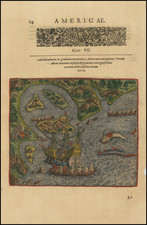
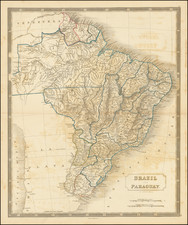
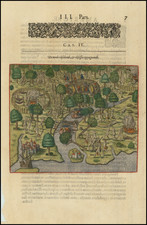
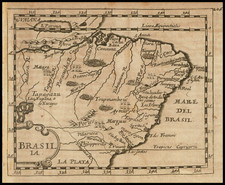
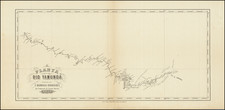
![[ Rio de Janeiro / Guanabara Bay ] Plan de la Baye et Port de Rio Janeiro Situee a la Cost due Bresil . . . Levee Geometriquement par le P. Capassi . . . 1785](https://storage.googleapis.com/raremaps/img/small/97782.jpg)